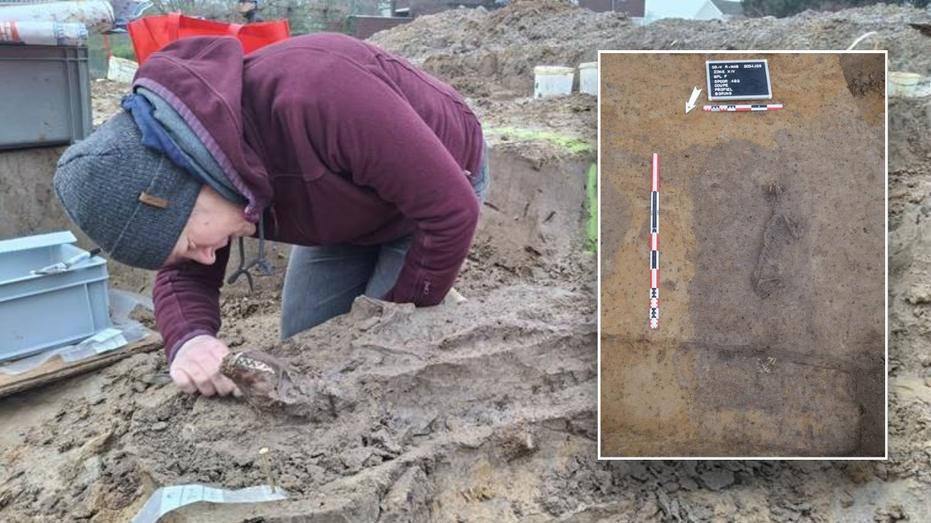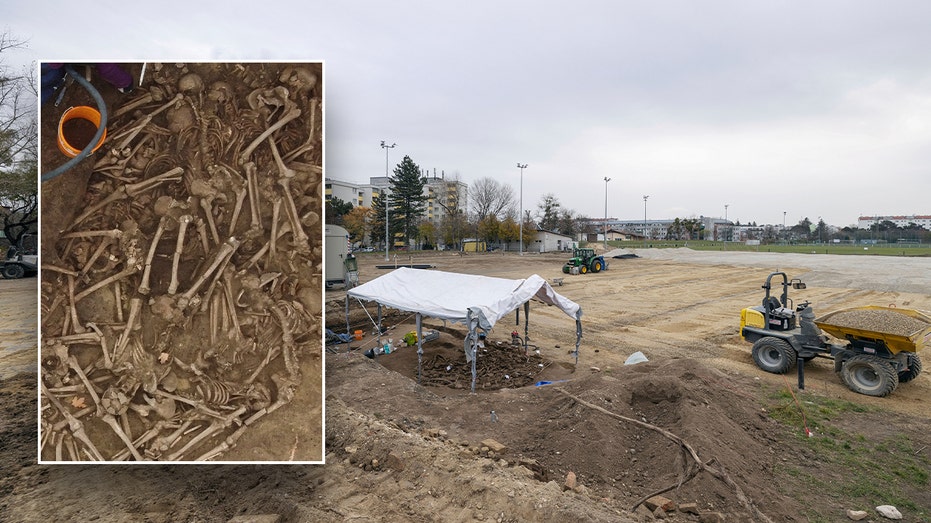- by foxnews
- 08 Apr 2025
Little girl discovers 3,800-year-old amulet with ties to Biblical people during family trip
3-year-old Israeli Ziv Nitzan discovered a 3,800-year-old Canaanite amulet during a family trip last month at Tel Azeka, according to the IAA.

An Israeli child made a discovery of biblical proportions during a family trip last month.
The Israel Antiquities Authority (IAA) reported on Monday that 3-year-old Ziv Nitzan came across a 3,800-year-old Canaanite amulet back in March. The Canaanites were the original inhabitants of the Levant and were descended from Noah's grandson Canaan, according to the Old Testament.
Omer Nitzan, Ziv's sister, told the IAA that her family was walking along Tel Azeka, a hill in the Judaean Foothills, when the 3-year-old spotted the artifact.
The tell, or mound, is the location of the ancient town of Azekah, which is referenced in 1 Samuel 17:1 during a biblical battle between David and Goliath.
"We were walking along the path, and then Ziv bent down - and out of all the stones around her, she picked up this particular stone," the proud sister recounted. "When she rubbed it and removed the sand from it, we saw something was different about it. I called my parents to come see the beautiful stone, and we realized we had discovered an archaeological find!"
The find, which dates back to the Middle Bronze Age, was immediately reported to the IAA. The scarab was either used as a seal or amulet, according to Dr. Daphna Ben-Tor.
"[Scarabs] were found in graves, in public buildings and in private homes," the expert was quoted as saying. "Sometimes they bear symbols and messages, that reflect religious beliefs or status."
Pictures show the well-preserved scarab bearing the shape of a dung beetle, which was considered sacred in Ancient Egypt.
"It was a symbol of new life, because of the dung ball it created and then laid its eggs into it, from which new life would hatch," the IAA explained. "Its name in Egyptian derives from the verb 'to come into being', or 'to be created.' This is because the Egyptians saw the scarab as a symbol of the incarnation of God the Creator."
Ziv Nitzan was awarded a certificate of appreciation for her efforts. Tel Aviv University professor Oded Lipschits expressed gratitude for the find, telling the IAA that he's been excavating Tel Azekah for nearly 15 years.
"The excavation findings show that during the Middle Bronze and Late Bronze Ages, here in Tel Azekah, thrived [as] one of the most important cities in the Judean Lowlands," Lipschits said. "The scarab found by Ziv joins a long list of Egyptian and Canaanite finds discovered here, which attest to the close ties and cultural influences between Canaan and Egypt during that period."
- by foxnews
- descember 09, 2016
Ancient settlement reveals remains of 1,800-year-old dog, baffling experts: 'Preserved quite well'
Archaeologists have recently unearthed the remarkably well-preserved remains of a dog from ancient Rome, shedding light on the widespread practice of ritual sacrifice in antiquity.
read more




